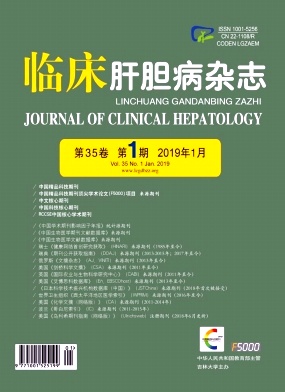|
[1]DEBRAY D, FRANCHI-ABELLA S, IRTAN S, et al.Cholelithiasis in infants, children and adolescents[J].Presse Med, 2012, 41 (5) :466-473.
|
|
[2]DENG XM, YANG X, CHEN Y, et al.Minimally invasive therapy for occult choledocholithiasis during laparoscopic cholecystectomy[J].Chin J Min Inv Surg, 2014, 14 (9) :796-798. (in Chinese) 邓小明, 杨星, 陈焱, 等.腹腔镜胆囊切除术中隐匿性胆总管结石的微创治疗[J].中国微创外科杂志, 2014, 14 (9) :796-798.
|
|
[3]POLISTINA FA, FREGO M, BISELLO M, et al.Accuracy of magnetic resonance cholangiography compared to operative endoscopy in detecting biliary stones, a single center experience and review of literature[J].World J Radiol, 2015, 7 (4) :70-78.
|
|
[4]GURUSAMY KS, GILJACA V, TAKWOINGI Y, et al.Ultrasound versus liver function tests for diagnosis of common bile duct stones[J].Cochrane Database Syst Rev, 2015, 2:CD011548.
|
|
[5]TSENG CW, CHEN CC, CHEN TS, et al.Can computed tomography with coronal reconstruction improve the diagnosis of choledocholithiasis?[J].J Gastroenterol Hepatol, 2008, 23 (10) :1586-1589.
|
|
[6]KONDO S, ISAYAMA H, AKAHANE M, et al.Detection of common bile duct stones:Comparison between endoscopic ultrasonography, magnetic resonance cholangiography, and helical-computed-tomographic cholangiography[J].Eur JRadiol, 2005, 54 (2) :271-275.
|
|
[7]LEE JK, KIM TK, BYUN JH, et al.Diagnosis of intrahepatic and common duct stones:Combined unenhanced and contrast-enhanced helical CT in 1090 patients[J].Abdom Imaging, 2006, 31 (4) :425-432.
|
|
[8]ALMADI MA, BARKUN JS, BARKUN AN.Management of suspected stones in the common bile duct[J].CMAJ, 2012, 184 (8) :884-892.
|
|
[9]GURUSAMY KS, GILJACA V, TAKWOINGI Y, et al.Endoscopic retrograde cholangiopancreatography versus intraoperative cholangiography for diagnosis of common bile duct stones[J].Cochrane Database Syst Rev, 2015, 2:CD010339.
|
|
[10]JAMAL KN, SMITH H, RATNASINGHAM K, et al.Meta-analysis of the diagnostic accuracy of laparoscopic ultrasonography and intraoperative cholangiography in detection of common bile duct stones[J].Ann R Coll Surg Engl, 2016, 98 (4) :244-249.
|
|
[11]TIAN H, LIU JF.The application of laparoscopic ultrasonography in difficult laparoscopic cholecystectomy[J].J Laparo Surg, 2010, 15 (3) :207-209. (in Chinese) 田虎, 刘竞芳.腹腔镜超声在困难腹腔镜胆囊切除术中的应用[J].腹腔镜外科杂志, 2010, 15 (3) :207-209.
|
|
[12]LI JW, FENG B, WU L, et al.Intraoperative cholangiography in combination with laparoscopic ultrasonography for the detection of occult choledocholithiasis[J].Med Sci Monit, 2009, 15 (9) :mt126-mt130.
|
|
[13]GILJACA V, GURUSAMY KS, TAKWOINGI Y, et al.Endoscopic ultrasound versus magnetic resonance cholangiopancreatography for common bile duct stones[J].Cochrane Database Syst Rev, 2015, 2:CD011549.
|
|
[14]BADGER WR, BORGERT AJ, KALLIES KJ, et al.Utility of MRCP in clinical decision making of suspected choledocholithiasis:An institutional analysis and literature review[J].Am JSurg, 2017, 214 (2) :251-255.
|
|
[15]YAN W, ZHENG LL, YU H, et al.An excerpt of BSG guidelines on the management of common bile duct stones (2017) [J].JClin Hepatol, 2017, 33 (8) :1440-1447. (in Chinese) 闫伟, 郑丽玲, 于弘, 等.《2017年英国胃肠病学会胆总管结石的管理指南》摘译[J].临床肝胆病杂志, 2017, 33 (8) :1440-1447.
|







 DownLoad:
DownLoad: